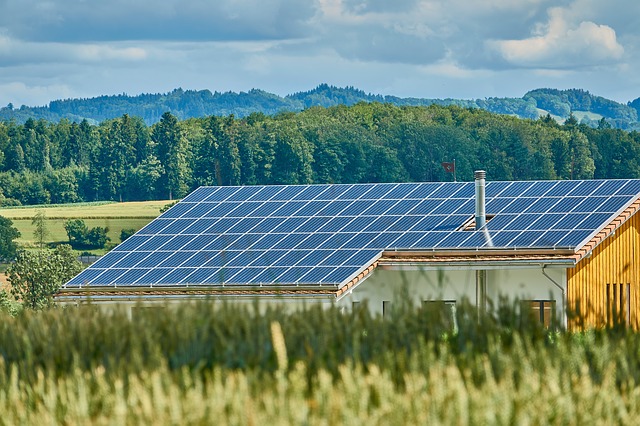clear
How could new-build homes be improved to encourage more renewable energy use?
clear

source:
cyberangel70
I believe we need to take bigger steps in creating a world that relies on renewable energy; and one way to take a step in the right direction is to build homes that have the ability to run on renewable energy. Many homes we live in now are decades if not centuries old, and therefore we should have the future in mind when building new homes. We are moving towards a renewable energy world, so why are we not building for it. One way which new homes could encourage renewable energy use, is to be fitted with solar panels. With more and more houses having solar panels fit to their roofs, why do we not start building homes with solar panels already there? Thus making it standard practice. I would suggest that a rule is put in place, for the UK anyway, for every new build home to be fitted with solar panels. The cost could be a factor against this, but surely having a solar panel in the home is a selling point in itself.
 1
1
clear
They could be built much more efficiently, with wall and loft insulation already in place, double glazing as standard, and energy efficient appliances and lightbulbs installed from the get go. Another thing that companies are looking into is plugging towns - or even housing estates - into smart grids, that respond to smart meters in the home which report on energy usage and fluctuations so that electricity can be used in the most efficient way possible.
 0
0
clear
I beleive It is clearly easier and cheaper to install renewables when houses or flats are being built than adding them later, not to mention the disruption that is involved in retrofitting. Actually it’s just plain common sense. Yet the Government incentivises retrofit whilst ignoring new build.
Should we not be future-proofing our housing stock against the remorselessly rising costs of fossil fuels, delivering housing that is fit for the 21st century? Installing renewables may add a small amount to the initial cost but nobody argues that they don’t pay for themselves over the life of the measure, sometimes many times over, providing significantly lower bills to the occupants.
Developing new renewable resources will require large initial investments to build infrastructure. These investments increase the cost of providing renewable electricity, especially during early years.
And I want to talk about an example : The UK :
To encourage environmentally friendly construction practices there, the Government also introduced The Code for Sustainable Homes which provides guidelines for sustainable building practices. There are six award leves ranging from 10% energy efficient to zero carbon. It will eventually become mandatory that all new buildings will meet Level 6 (zero carbon) of the Code. And actually in October 2010 Building Regulations changed to reflect Level 3 (25% increased energy efficiency) for every new home built.
 0
0
clear
 Wafa Benizid
6 years, 11 months ago
Wafa Benizid
6 years, 11 months ago
Newly built homes can and do have the ability to be directly connected with the electrical grid therefore making every household owner also part of energy bool buyer/seller.
A private or multi-owned house mainly have solar panels on the rooftops that provide for cold water heating and normal heating during winter season. It can also provide some part of electrical power for charging supplies, but very little of it, due to small capacity batteries, that are very expensive.
If the house is further away from the city, it can have its own wind mill and generate its own electricity, presumably sell it back to the grid to make up the building costs. It has to be further away because of the sound that the generator makes when the rotor spins generating electricity.
 0
0
clear
 Ignas Mikalauskas
5 years, 8 months ago
Ignas Mikalauskas
5 years, 8 months ago

Sign up to post or vote on answers.
Improveo will help systemize your knowledge.